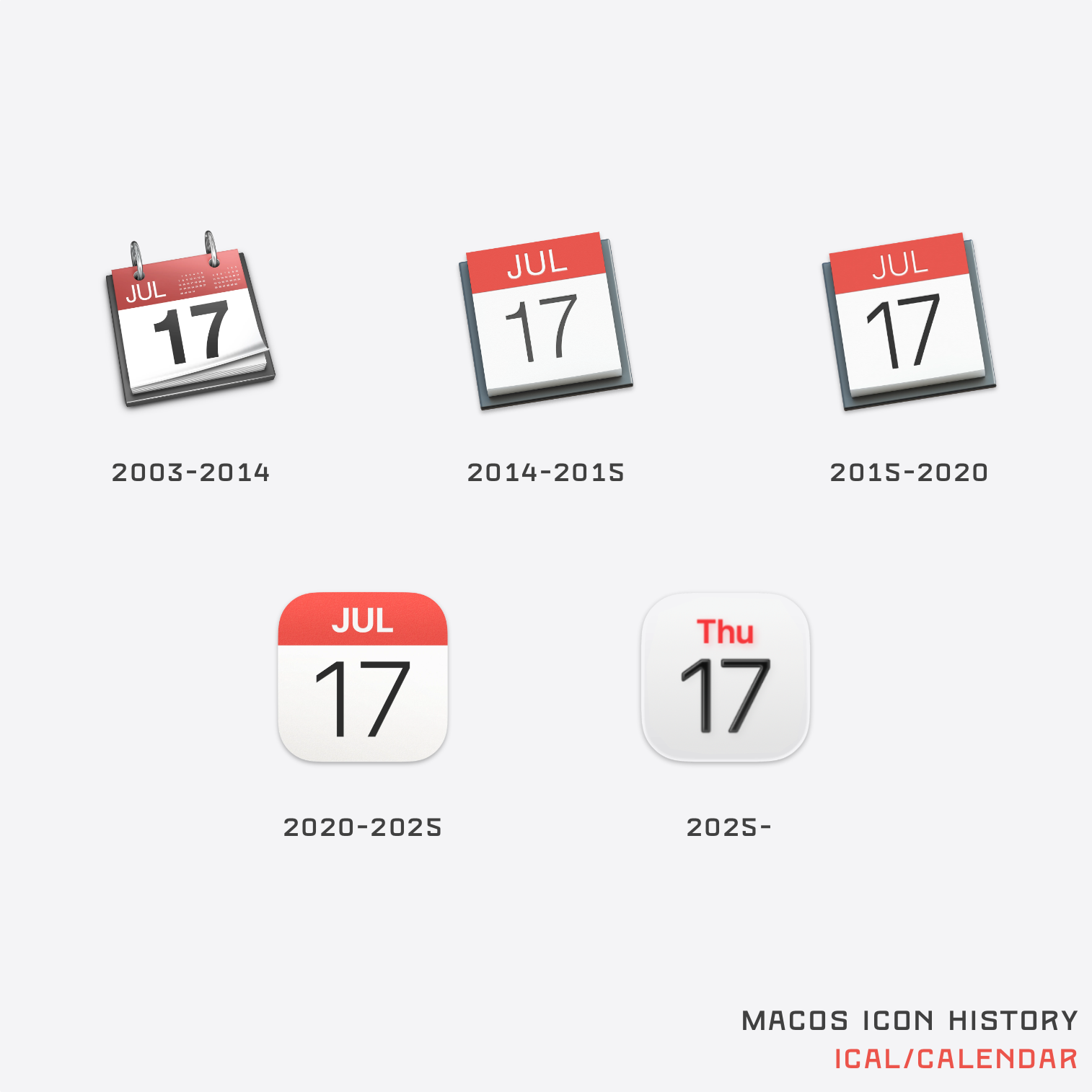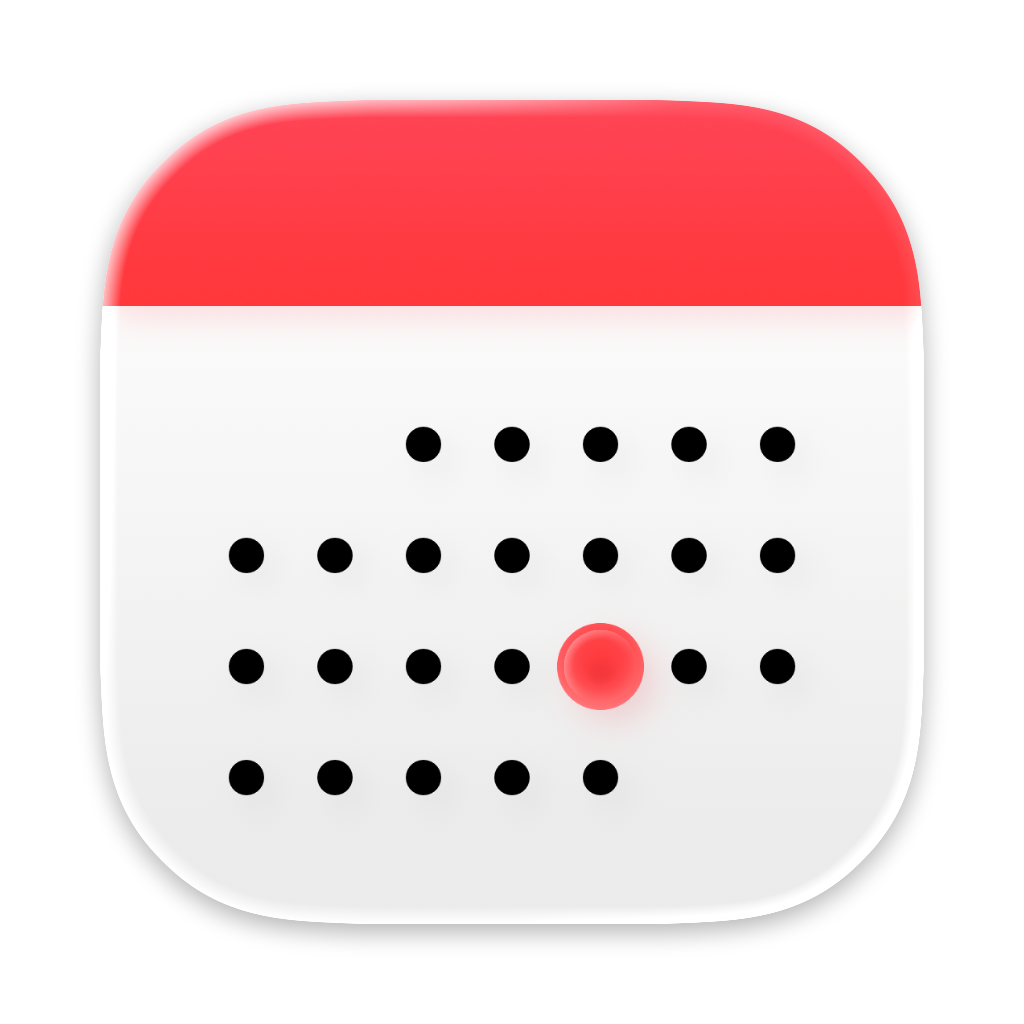Fast, private email that's just for you. Try Fastmail free for up to 30 days.
Calendar Icon’s Lost Sentimentality
A few weeks ago, with the introduction of macOS 26 imminent, BasicAppleGuy published a collection of macOS icons from across its four-decade history:
With this release being one of the most dramatic visual overhauls of macOS’s design, I wanted to begin a collection chronicling the evolution of the system icons over the years.
I am a sentimental man, and this was a heck of a nostalgia trip for this “Apple Guy”: I’ve used every Mac operating system since the ’80s, and seeing some of these old icons brought back fond memories, especially the icons from the 1994–2001 era, which I consider my Macintosh “coming of age.”
The modern icons have certainly lost some of their charm, leading to (legitimate) gripes about icons that look like placeholders, but there was one that really stuck in my craw:
Calendar.
My bellyaching about the Calendar icon was initially based on late macOS 26 betas. That’s the last icon (“2025–”) shown in Basic Apple Guy’s Calendar collage: a small, abbreviated day (“Thu”) in red and a large date (“17”) in black, both over a cream gradient background. At first glance it could easily be mistaken for the previous icons.

But I had two issues with that new icon:
- It dropped “Jul”
- It replaced it with “Thu”
Even as the Calendar icon design morphed over the years, “Jul 17” remained. That date wasn’t chosen at random: it’s the date that Calendar—or more accurately, iCal, as it was then called—was first introduced: July 17, 2002.
It was a lovely little easter egg, an homage to its history, and a wonderful touch of humanity: a reminder that Apple is made up of people who care to include such details, as trifling as they may seem.
Apple’s product imagery is chock full of such easter eggs: iPhone and iPad time is always 9:41. Apple Watch time is always 10:09. And the Calendar icon was always July 17.
Now, this tiny touch of whimsy was gone from Calendar. Removing “Jul” from the icon throws away two decades of Apple history. It torches the goodwill of millions of long-time Mac users, and even new Mac users who might appreciate these little nods to nostalgia.
But wait, there’s more.
Why Thu in the revised icon? Was July 17, 2002 a Thursday and the new icon simply a more subtle reference to the release date? Let’s open Calendar, and jump back in time.
⇧⌘T 7 ⇥ 17 ⇥ 2002 ⏎
(For the non-Mac nerds, that’s Shift-Command-T to open Go to date; 7 tab, 17 tab, 2002; then press Return.)
Nope, July 17, 2002 was a Wednesday.
An Apple that paid attention to these details would have performed this basic check and used the right day to maintain a subtle connection to the icon’s past. Using “Thu” instead of “Wed” suggests the meaning behind the “Jul 17” date wasn’t fully understood.
I’ll be the first to acknowledge how trivial this complaint is, but much like reversing the colors of the Finder icon (since fixed) or the transparent-by-default menu bar, it’s another small sign that some at Apple don’t know—or care about—the history and traditions of Apple. Perhaps they aren’t even aware there is history and tradition to care about. It feels like we’re slowly seeing the death of sentimentality at a company that has historically embraced it. Is there anyone on the inside who still cares about these little subtleties and—crucially—is in a position of influence and authority to keep these flickers of fun alive? Phil? Joz?
With the release of macOS 26 came yet another Calendar icon. Gone is “Jul,” “Thu,” even the large “17.”
In its place is a red banner atop a cream background and an array of black dots representing days—and one red dot.

While I mourn the loss of “Jul 17,” and it’s not (by American standards) a July 2002 representation, I actually much prefer this newest icon over the “Thu” variant: it more directly harkens back to the earlier designs. (I’ll attribute the loss of text to efforts to be more international friendly.)
And that red dot? It marks the 17th day.
Now, I know I should be satisfied that some small sliver of sentimentality survives in the newest Calendar icon. But I can’t.
That red dot falls on a Thursday.

